공간이 사용자에게 끼치는 영향력에 대해 객관적인 연구가 진행되면서, 전 세계적으로 교육 공간 디자인을 통한 학습의 효율성 증진을 도모하는 대학들이 늘어가고 있다. Tokyo의 Kogakuin 대학, Hachijoji 캠퍼스 신관 건물의 ‘LC8’ 역시 ‘Learning Commons’라는 키워드를 모티브로 설계됐다. Learning Commons란 주어진 자료를 습득하는데 그치는 것이 아닌, ‘다양한 정보와 사람이 교류/협력을 통해 창의적인 지식을 생산하는 학습 공유 공간’을 지칭한다. 이에 따라 LC8은 강의실 밖에서도 지성인들의 다양한 활동을 지원하는 유동적인 공간으로 구성됐다.
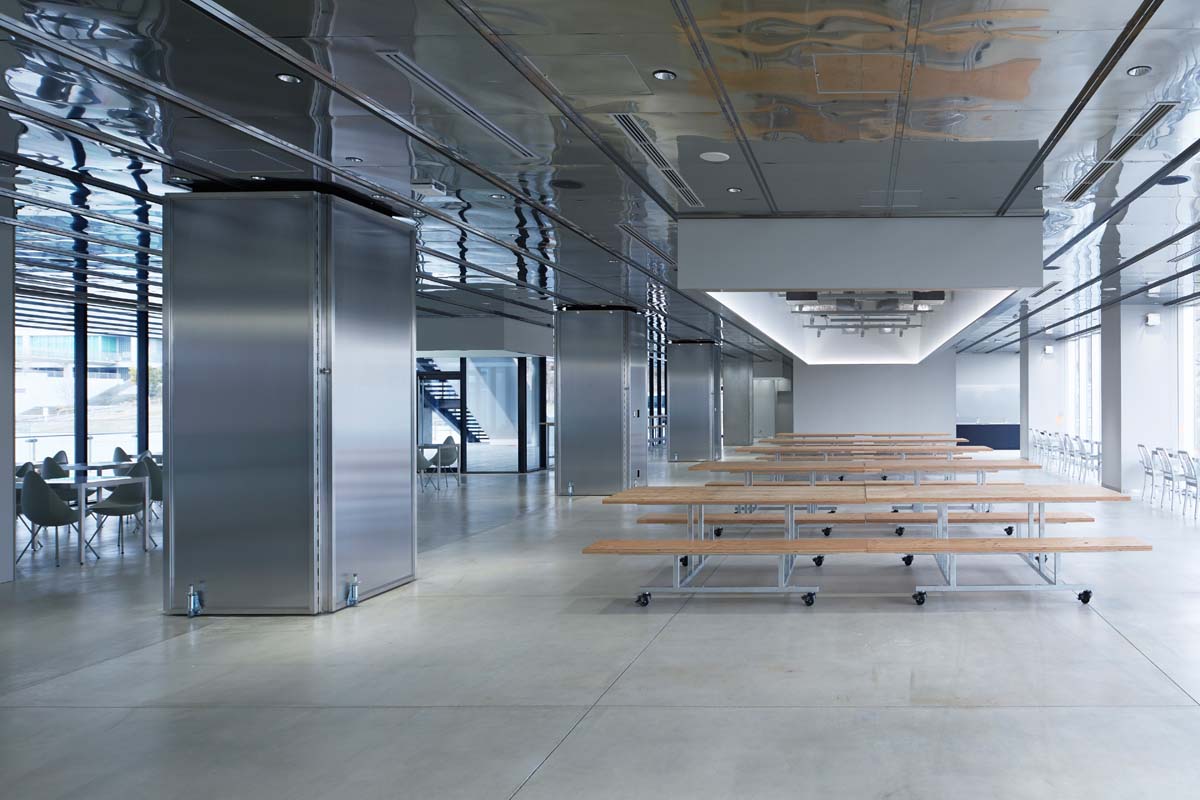
교수진과 학생들 간에 수직적인 형태의 학습이 아니라 서로 지식을 공유하고, 그 토대로 더욱 가치 있는 형태의 학문적 발전을 이루기 위해 이런 구조의 다목적 공간이 늘어가는 추세다. LC8의 공간도 이에 따라 ‘지식의 정원’, ‘개인 학습공간’과 ‘다목적 유리 부스실’, ‘도서(圖書)들의 집’으로 나눌 수 있다. 구획되는 공간들 외에도 중앙의 홀은 오픈 세미나 및 학생 회의 등 여러 가지 목적으로 사용된다.
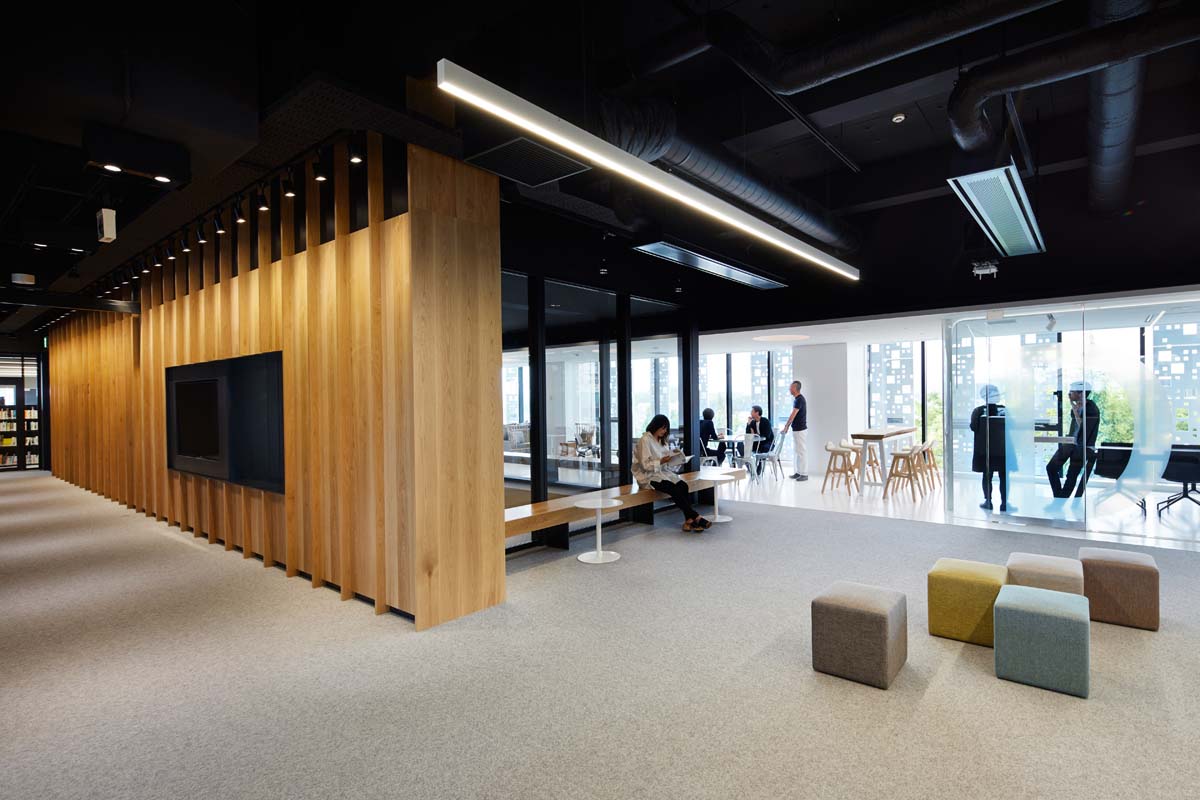
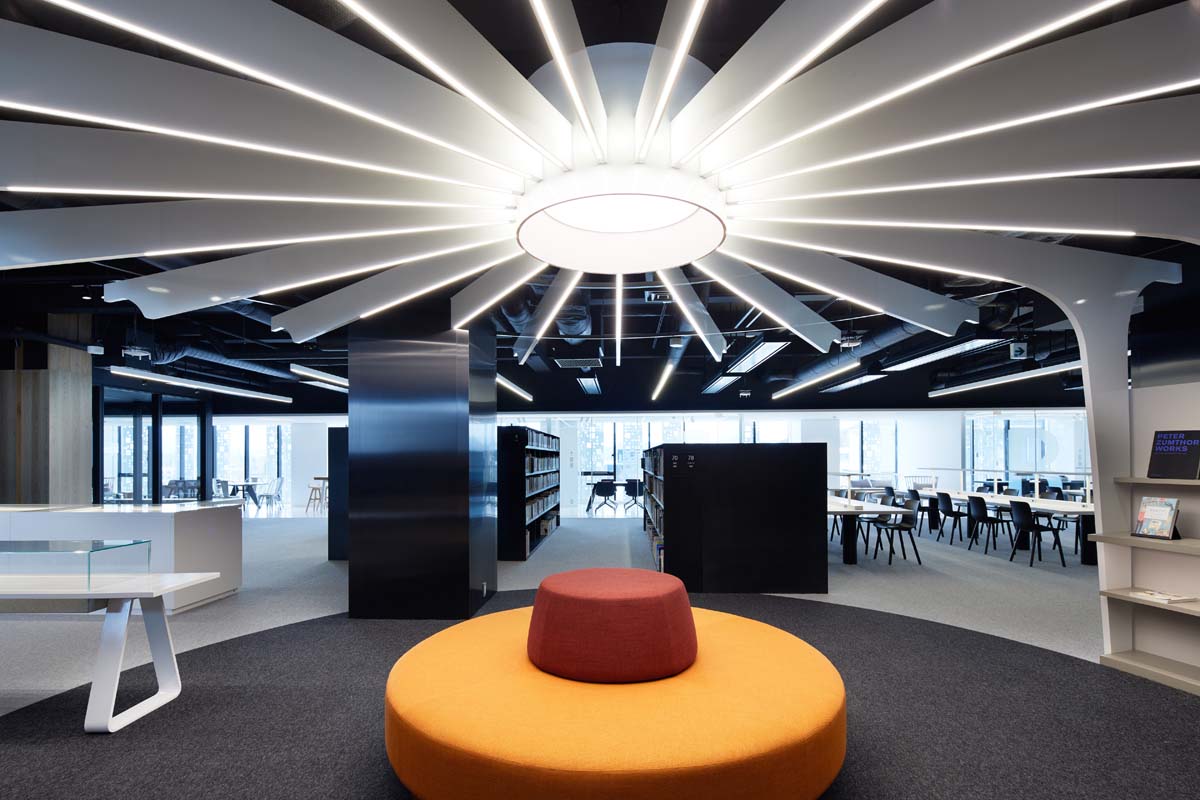
‘지식의 정원’은 둥근 소파를 중심으로 펼쳐진 시청각 공간이다. 천장의 조명은 이 공간에서 자유로운 토론을 통한 지식의 교류, 전파를 상징적으로 표현했으며, LC8의 디자인 키워드를 드러내주는 장치이기도 하다. Bookshelf의 바깥쪽을 따라 둥글게 감싸진 AV 부스는 시청각 자료를 활용한 여러 가지 형태의 학습을 돕는 별도의 개인 공간이다. 이외에도 지식의 정원은 교직원의 사무공간, 개인 학습 공간들을 갖춘 여러 기능을 수행하고 있다.
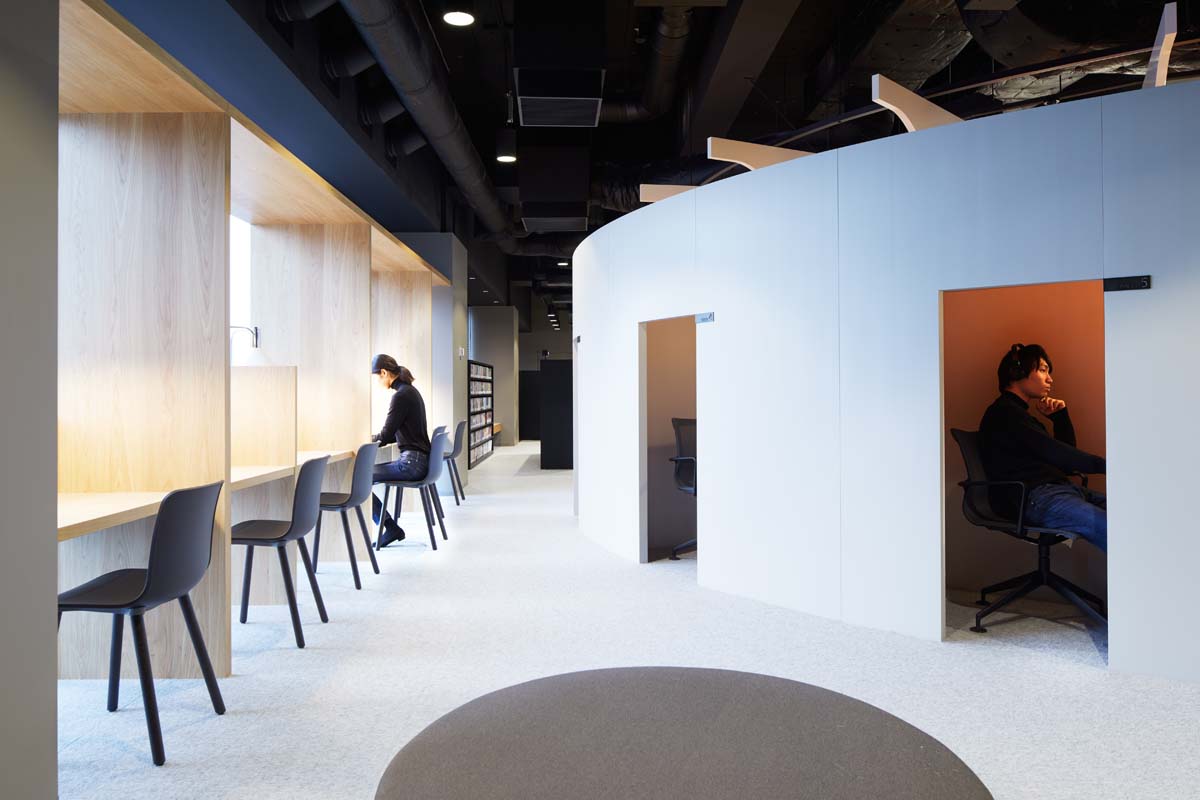
교내에서 이루어지는 다양한 형태의 토론을 지원하기 위해, LC8 내에는 큐브 형태의 유리 벽으로 구성된 부스를 설치했다. 다목적 프레젠테이션과 교수진, 학생들 간의 자유로운 토론이 벌어지는 6개의 큐브 공간들은 규모 별로 활용할 수 있도록 4층 벽면 창가에 일렬로 배치되어있다. 투명한 유리로 벽체를 구성한 덕분에 실내가 협소해 보이지 않으며 전체 층의 채광에도 문제가 없을 뿐만 아니라 교류와 상호 협력을 통한 지식의 재생산 과정을 가시적으로 보여준다는 점에서 의미가 있다.
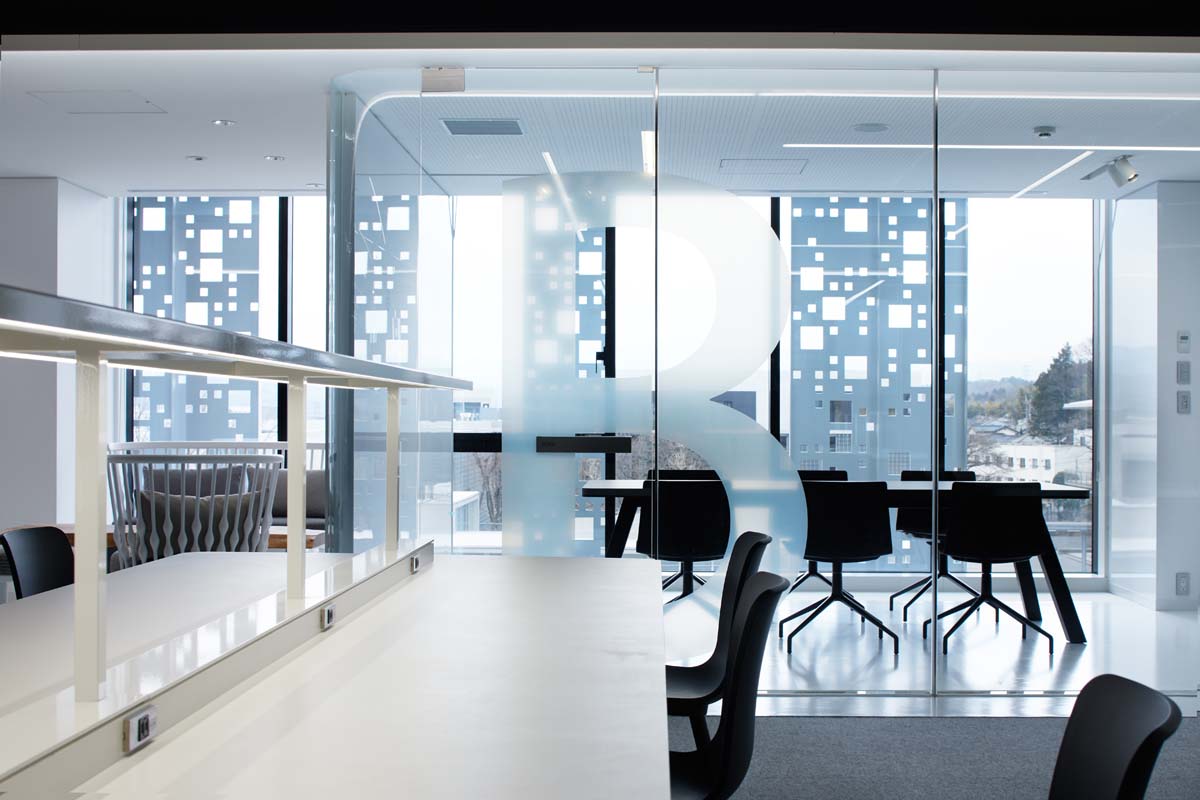

Putting student activities on display to encourage the diverse use of space. LC8 (Learning Commons Hachioji) is an on-campus “third place” for students at Kogakuin University. Located on the first through fourth floors of the new Building 2 at the Hachioji Campus, space was conceived in the campus general plan as a new kind of learning site for gathering and engaging in discussion outside of the classroom. This “learning commons” combines the functions of the library, learning support center, and student hall typically found at any university also goes beyond these conventional functions to provide flexible shared space that gives rise to a diversity of student activities. LC8 is a place for students and faculties to gather, express themselves, and listen to others.
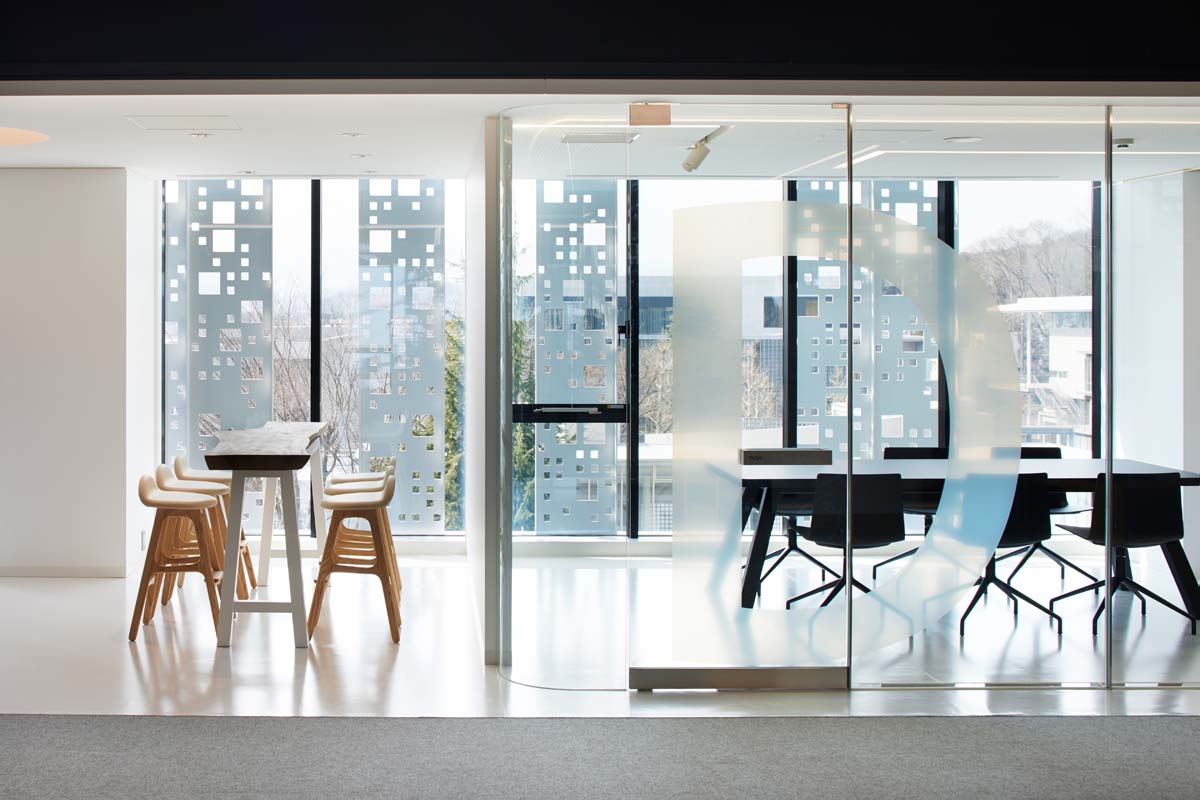
This is the site where active learning is held on daily bases such as open English classes, spontaneous presentations in front of the whiteboards, exhibits of multidisciplinary presentations, group presentations in “fishbowl” glass-walled rooms, reading in the café-lounge, student meetings that take advantage of the movable furniture, and multidisciplinary open seminars. Space is intended to encourage these types of activities, and therefore the design aims to support diverse uses by exhibiting the activities of users. For example, the mirrored ceiling on the second floor displays the reflected movements of students, the spaces between the steel and wood bookcases on the third floor promote street-performance-like activities, and the collage-style library on the fourth floor gives rise to multiple simultaneous events. These design experiments stem from our approach of rendering visible, or “displaying,” the activities of students.
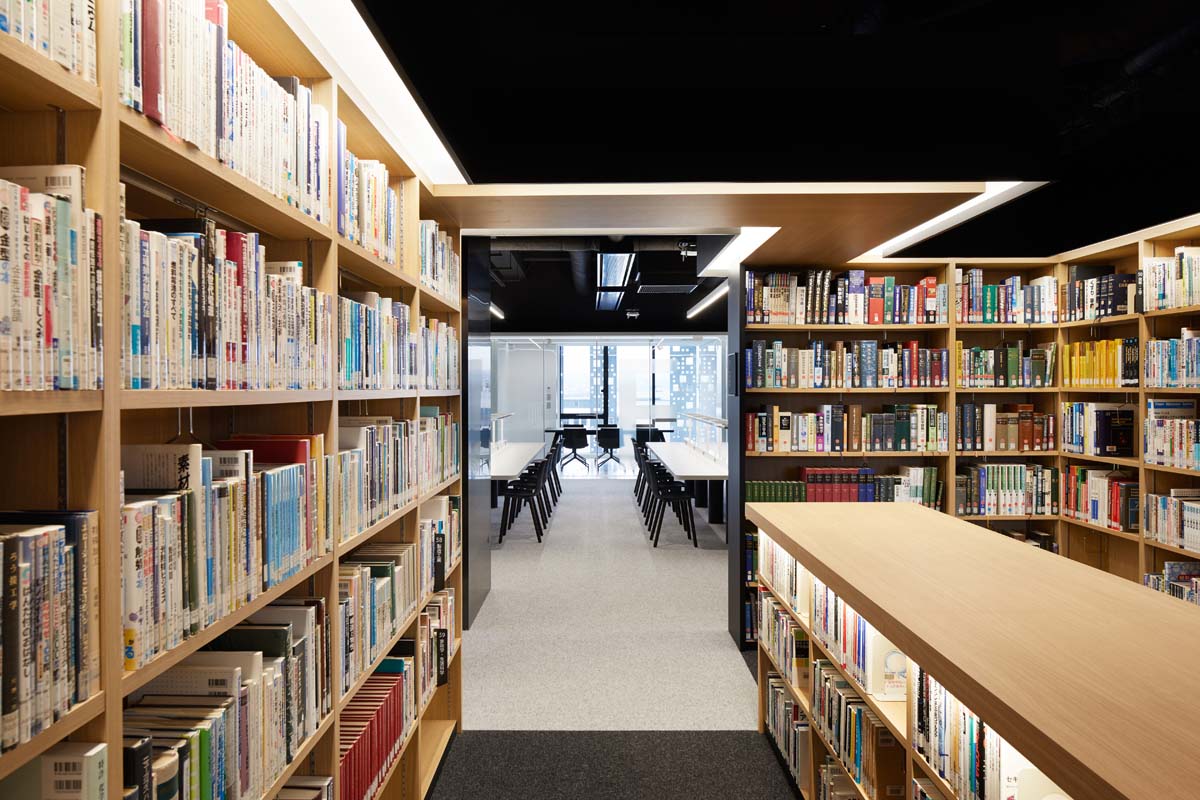
'The second to third floors were designed by Iijima Design and the fourth floor was designed by Spinoff.'
차주헌
저작권자 ⓒ Deco Journal 무단전재 및 재배포 금지











0개의 댓글
댓글 정렬